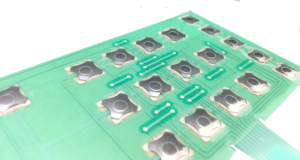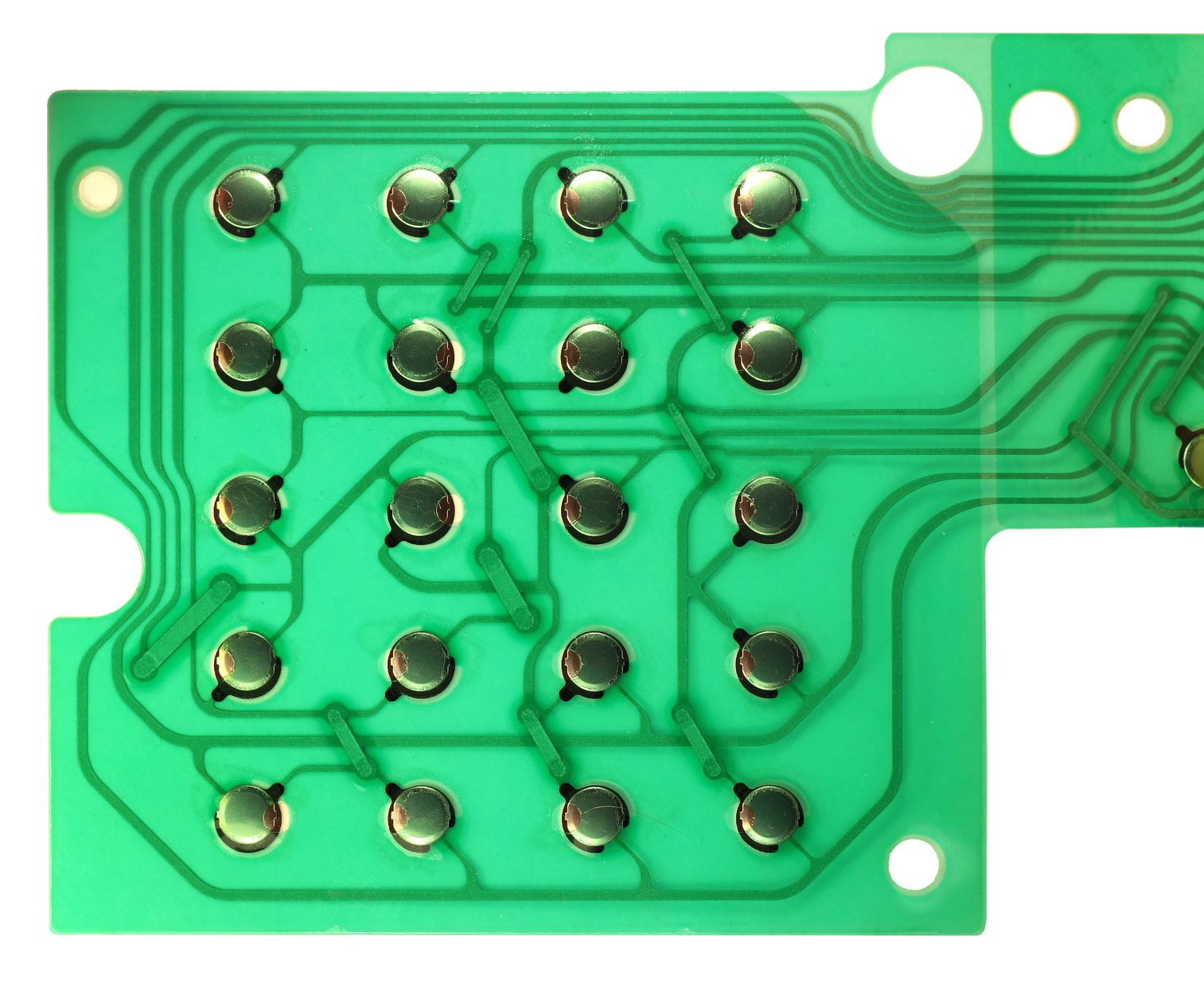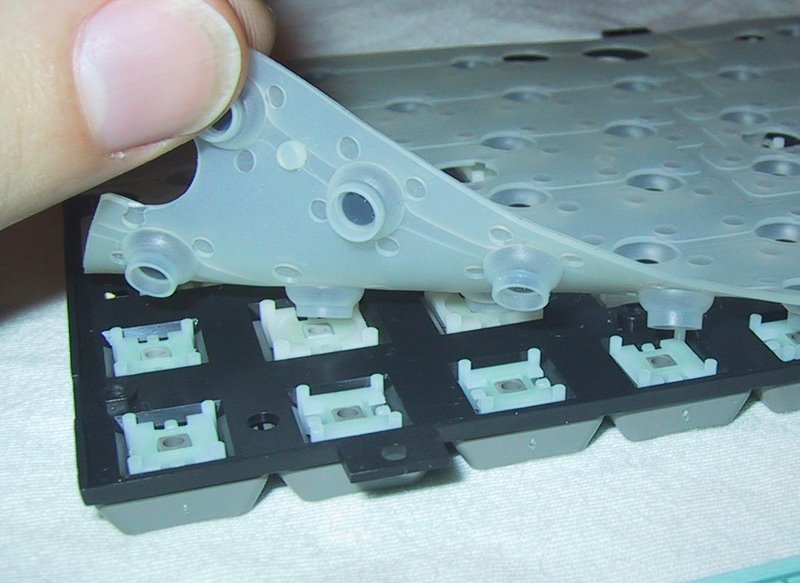The Full Guide to Membrane Switch Technology and Its Applications
The Full Guide to Membrane Switch Technology and Its Applications
Blog Article
Understanding the Functionality of Membrane Switches Over for User User Interface Gadget
The capability of membrane changes stands for a significant advancement in interface layout, incorporating efficiency with aesthetic flexibility. These switches operate with a multi-layered framework that translates user communications right into electrical signals, enabling both compact layouts and resilience against ecological factors. As markets increasingly focus on customer experience, recognizing the subtleties of membrane layer switch innovation ends up being essential. What ramifications do these developments hold for future applications, and how might they redefine user interactions across various gadgets?
What Are Membrane Layer Buttons?
Membrane layer switches are innovative user interface devices that help with user communication with digital devices. These versatile elements include multiple layers, including a graphic overlay, spacer, and a printed circuit layer. The design enables for a smooth combination right into numerous electronic devices, improving both the visual and practical aspects of user interfaces.
Membrane buttons are typically utilized in a wide variety of applications, from home devices to industrial equipment and clinical gadgets. Their construction usually features a slim account, making them an optimal option for small layouts. The responsive comments offered by these switches can be engineered to meet details customer choices, ensuring effective interaction between the user and the gadget.
Sturdiness is one more considerable benefit of membrane layer switches, as they are immune to dust, moisture, and chemicals, which improves their life expectancy sought after atmospheres. In addition, these buttons can be personalized in regards to form, size, and visuals style, permitting for branding and user-specific features. Generally, membrane switches stand for a useful remedy for enhancing user experience in electronic devices, integrating performance with visual charm in an effective way.
Just How Membrane Switches Job
Operating on a straightforward principle, membrane changes utilize a layered building to register customer input successfully. Each button includes numerous layers, including a printed circuit layer, a spacer layer, and a top visuals layer, which are designed to interact effortlessly. When an individual presses the leading layer, it presses the spacer layer, bringing the conductive components of the circuit layer right into contact with each other.
This get in touch with produces a shut circuit, signaling the gadget to carry out a particular feature. The layout permits various configurations, including tactile responses, which can boost the customer experience by supplying a physical feeling upon activation. The products made use of in membrane layer buttons typically consist of versatile substrates, such as polyester or polycarbonate, which ensure sturdiness and strength against wear and tear.

Trick Advantages of Membrane Switches

Another significant benefit is their density. Membrane switches are thin and light-weight, which makes it possible for manufacturers to save area in their devices without compromising performance. This feature is particularly beneficial in applications where weight and volume are essential factors to consider.
Additionally, membrane layer switches are resistant to dust, dampness, and chemicals, boosting their durability. This resilience expands their lifespan and lowers the demand for regular replacements, causing expense savings with time.
Moreover, the responsive feedback provided by membrane switches can be optimized to boost customer interaction. They can include features such as raised switches or distinct clicks, boosting usability and individual experience.
Applications Across Industries
Customer user interface gadgets utilizing membrane switches are common in a wide range of sectors, showcasing their adaptability and performance. Membrane Switch. In the clinical sector, membrane buttons are indispensable to devices such as analysis equipment and individual monitoring systems, where their longevity and convenience of cleaning are critical for preserving hygiene requirements. In a similar way, in the automotive sector, these buttons are employed in control panel controls and infomercial systems, offering a sleek and modern-day interface for individuals.
In addition, the consumer electronics field benefits from membrane layer switches in appliances and handheld devices, where compact design and user-friendly user interfaces enhance user experience. Industrial applications additionally utilize membrane layer switches for control board in machinery and automation systems, emphasizing their toughness and resistance to rough settings.
In the aerospace and protection markets, membrane layer buttons are used in cockpit controls and devices, where reliability and efficiency under severe problems are paramount. In addition, the video gaming market progressively integrates membrane layer switches in controllers and game makers, adding to an appealing user experience. On the whole, the convenience of membrane changes allows their widespread usage across many sectors, emphasizing their importance in modern interface layout.
Future Patterns in Membrane Switch Over Modern Technology

Furthermore, using advanced materials, such as polycarbonate and polyester films, is expected to rise, supplying enhanced durability and check these guys out resistance to ecological stress factors. These products add to the general longevity of membrane layer buttons, making them suitable for harsher commercial applications.
In addition, the incorporation of smart innovation, consisting of IoT connectivity, will make it possible for membrane switches to connect with various other gadgets and systems, helping with a much more interactive user experience. This trend lines up with the expanding need for wise gadgets throughout various industries, from health care to customer electronic devices.
Finally, modification choices are anticipated to broaden, allowing manufacturers to create bespoke remedies tailored to certain individual requirements and choices. These advancements will certainly place membrane buttons as essential components in the advancement of interface innovation.
Verdict
In verdict, membrane switches represent a hop over to here critical improvement in user interface modern technology, using a dependable and versatile option for varied electronic applications. As advancements in material scientific research and touch sensing innovations proceed, the functionality and applicability of membrane layer buttons are anticipated to broaden, reinforcing their value in contemporary electronic gadgets.
Report this page